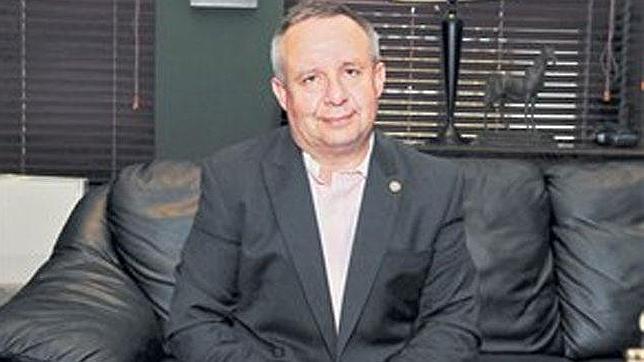
Today the US Attorney’s office for the Southern District of Manhattan released a much-anticipated indictment, 43 pages long, charging three of the central figures in the Knoedler art forgery case. Three arrest warrants have been issued. As is widely known, dozens of collectors were defrauded of tens of millions of dollars, a fact which only came to light in the past four years. Until now, the only person formally charged in the case has been Long Island dealer Glafira Rosales. Days after art dealer Jose Carlos Bergantiños Diaz and his brother Jesus Angel Bergantiños Diaz, were arrested in Southern Spain, the US Attorney’s office released the previously sealed indictment, dated March 31, a copy of which was obtained by artnet News.
Detailed charges outline Jose Carlos’s longstanding practice of selling fake works “by” such famous artists as Jackson Pollock, Mark Rothko, Willem de Kooning, Franz Kline and Robert Motherwell. The US Attorney’s office did not offer comment on reports about its plans to extradite one or both men to the US. Also charged in the scheme was a Chinese-born painter Pei Shen Qian, who created the works at his home in Woodhaven, Queens. These were eventually sold to unwitting buyers, with many of the sales going through the once prestigious, now shuttered Knoedler gallery on Manhattan’s Upper East Side. The defendants also concocted a story, which varied slightly over time, that the source of the works was a mystery collector of Eastern European ancestry, referred to as “Mr. X” who had acquired many of the works directly from the artists. The heir of this collector referred to as “Mr. X, Jr.” was the seller, but wished to remain anonymous.
Media reports have indicated that Pei Shen Qian fled to China, but the indictment states that he “resides in Queens, New York.” News of the charges against Mr. Qian come as a surprise, since he has been portrayed until now as an obscure painter who was paid relatively little for the works and who seemed to have only a vague notion of how they were labeled and sold once they were shuttled away from his modest Queens home. An earlier indictment against Glafira Rosales, who is Jose Carlos’s former girlfriend, mentioned Mr. Qian only as “the forger” and did not identify him by name, suggesting that he was perhaps not a target of its investigation.
According to the indictment, Mr. Qian lied to FBI agents investigating the scheme, telling them that he did not recognize Rosales’s name and that he was unfamiliar with the names of certain artists, including those whose names he “had repeatedly and fraudulently signed” on paintings he created. In Qian’s home, investigators found copies of various Abstract Expressionist paintings he created, books on these artists and their techniques, paints, brushes, canvases, and other materials “such as an envelope of old nails marked ‘Mark Rothko’ all to aid QIAN in creating the fake works,” according to the indictment. Rosales, who pleaded guilty last September to wire fraud, tax evasion, and knowingly selling fake art, faces a maximum of 99 years in jail on the combined counts. She agreed to forfeit $33.2 million, including her home in Sands Point, New York, and to pay maximum restitution of $81 million. She was due to be sentenced in March but the sentencing was tentatively postponed until September, reportedly because of a secret document that was filed with Manhattan federal court on March 14. Rosales’s attorney, Steven Kartagener, did not respond to a request for comment.
The counts in the current indictment against the Bergantiños Diaz brothers and Qian are similar, including conspiracy to commit wire fraud, tax evasion, and money laundering. “The one thing this tells us is that the investigation is ongoing and the government is being very thorough,” New York attorney John Cahill told artnet News. Mr. Cahill is representing collector John Howard, who is suing over a $4 million fake De Kooning purportedly created circa 1956-57. He purchased it from Knoedler in 2007. According to Howard’s claim, Knoedler acquired the work from Rosales days before selling it to Howard for $750,000.
Former Gucci chairman Domenico de Sole is suing over an $8.4 million painting passed off as a Rothko. Many of the paintings in question were subjected to a forensic analysis which turned up numerous inconsistencies concerning the dates of materials used in the work, in some instances uncovering the presence of pigments that were not commercially available until years after the date the works were created. Another noteworthy detail in the indictment: From about 1994 until about 2009, Bergantiños Diaz paid Qian “several hundred dollars to several thousand dollars, often in cash, for the Fake Work.”
The document also states that when Qian spotted one of his fake works hanging in an art show in Manhattan with a price “far in excess” of what he had received for the work, he began demanding more money from Bergantiños Diaz and thereafter began earning serveral hundreds of thousands of dollars for each fake he delivered. After retrieving the paintings from Qian, the indictment says, Rosales and Bergantiños Diaz “subjected many Fake Works to various processes, such as heating them, cooling them, and exposing them to the elements outdoors in an attempt to make the Fake Works seem older than they actually were.” Bergantinos Diaz “also stained newer canvases with tea bags to give them the false appearance of being older than they were,” according to the indictment. There are at least six lawsuits pending against Rosales, Bergantiños Diaz, former Knoedler president Ann Freedman, and former Knoedler owner Michael Hammer.